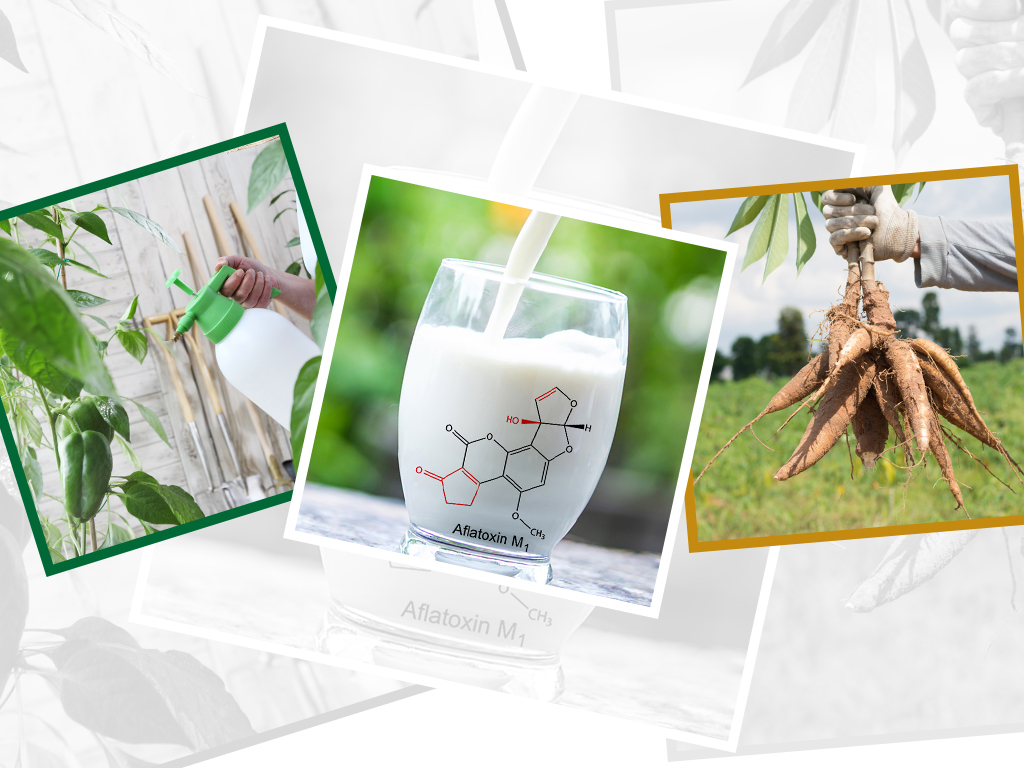BD World Food Day
Nutrition And Food Safety
According to the dtic Master Plan for Agriculture and Agro-Processing, the agriculture, and agro-processing sectors accounts for 20 % of total manufacturing employment and contributed an average of 5 % per annum to exports between 2011 to 2017.
To enable competition in food export markets, NMISA develops Certified Reference Materials (CRMs) specifically for foods produced in South Africa and the region. Africa relevant reference materials are key in reducing technical barriers to trade for African countries, especially in preparation for AfCFTA, and enables Africa to trade without relying on the developed world for measurement and testing assistance. Participating in NMISA’s Proficiency Testing Schemes (PTs) allows commercial laboratories to verify their analytical capabilities to ensure accurate and consistent measurement results.
New Proficiency Testing Schemes
In 2020, NMISA coordinated 7 proficiency testing schemes:
- Pesticide in litchi;
- Aflatoxins in peanut slurry;
- Pesticide in sweet peppers;
- Pesticides in avocados;
- Mycotoxin in casava;
- Nutritional parameters in corn soya; and
- Aflotoxin M1 in milk.
New Certified Reference Materials (CRMs)
New organic calibrators were prepared for use by commercial food testing laboratories as quality control reference solutions:
- Patulin in acetonitrile calibration solution;
- Fumonisin B1 in 50/50 acetonitrile water; and
- Fumonisin B2 in 50/50 acetonitrile water.
New Methods (National Measurement Standards)
The demand for sugar testing in South Africa has increased, following the implementation of the sugar tax in April 2018. Considering the resultant correlation between the cost of the product and its sugar content, the accuracy of the measurement is of particular importance. Therefore, NMISA developed a method to detect and quantify glucose, fructose, sucrose, maltose, galactose, and lactose in beverages.
This new measurement method is capable of quantifying individual sugar content in the range of 0,02 % to 80 % (or g/100g), with relative expanded uncertainties in the range of 1 % and 10 %. It will be used to value assign reference materials for proficiency testing schemes, which evaluates the accuracy and comparability of measurement results by participating commercial laboratories. It is also offered as a routine measurement service.
The pesticides-in-fruit method was successfully accredited as two new methods (pesticides by liquid chromatography tandem mass spectrometry and pesticides by gas chromatography tandem mass spectrometry). Full validation of these measurements was completed through participation in multiple international PTs.
New Quality Control Standards
Aflatoxins are found in a variety of foods and animal feed. Inappropriate storage of foodstuff can lead to contamination with fungi, which produce aflatoxins. Prolonged exposure causes acute and chronic poisoning in humans, which can manifest itself as a variety of cancers, especially liver cancer. Aflatoxin M1 or milk toxin originates as a metabolite of aflatoxin B1 in contaminated feed and can be found in dairy products such as cheese, butter, and yoghurt. NMISA developed and certified a new reference material for aflatoxin M1 in milk powder (CRM0035).
NMISA also released a new CRM for toxic and nutritional elements in wheat flour (CRM0006). This CRM will assist analytical laboratories to assess the accuracy of their measurement methods for determining heavy metals in food products, including grains, such as wheat, maize, oats, sorghum, and barley, as well as cereal products. NMISA’s wheat flour CRM is certified for fourteen (14) naturally occurring toxic and nutritional elements.
Why NMISA PT Schemes and Reference Materials?
- Highest Quality
- No imports/customs delays,
- No expensive, risky, and complicated shipping
- Locally relevant commodities (matrix)
- Locally relevant contaminants (e.g., pesticides)
- Locally relevant regulations (typical occurrence levels, complies with the Department of Health, Department of Agriculture, and the dtic)
- Locally relevant seasons (PTs reflect crop seasons, and thus commodities that would be tested at that same period)
- Proudly South African products (aimed at replacing expensive imports and growing our own economy)
https://www.nmisa.org/Pages/default.aspx






 Sign-up and receive the Business Media MAGS newsletter OR SA Mining newsletter straight to your inbox.
Sign-up and receive the Business Media MAGS newsletter OR SA Mining newsletter straight to your inbox.